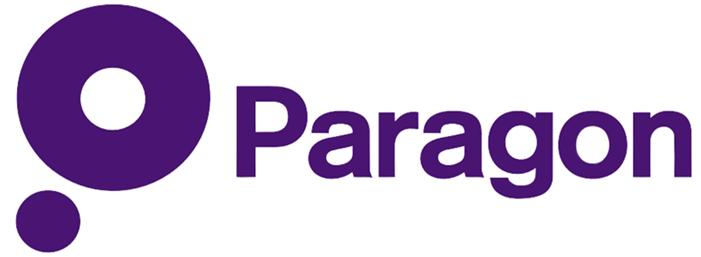
Piers Winton, Director at Paragon International Insurance Brokers, summarises the Building Safety Act and outlines the risks it poses for law firms
Underwriting solicitors’ professional indemnity insurance (PII) is not an easy business. Vast quantities of claims data backed by extensive hands-on experience have contributed to developing sophisticated insurance algorithms and risk appetite profiling that are arguably some of the most advanced we have experienced as brokers in the insurance market. One only has to look at the complexity of solicitors’ PII proposal forms to appreciate the extent of risk evaluation routinely performed by insurers. However, it is an underwriting approach that insurers regard as effective, as many firms will be all too aware. The solicitors’ PII market remains nervous but, broadly, insurance capacity adequately satisfies the profession’s needs.
Risk appetite
Underwriters base their pricing and risk acceptance decisions on a broad range of factors of which historical performance is a significant feature. So, what if the belief that their previous experience is no longer a reliable indicator of future risk surfaces? An uncertain economic outlook and new remote working practices are commonly cited examples of emerging threats that might upset the apple cart. But there’s a new kid on the block which, although to the best of our knowledge at the time of writing this article has yet to cause a PII claim, is making insurers and the profession twitchy. The Building Safety Act 2022 (the Act). Compounded by the Act impacting conveyancing, which is already a challenging work type for some PII insurers, will we see the appetite for conveyancing-heavy firms diminish further?
Does the Act pose additional risks?
So far, to our knowledge, no PII insurer has indicated that it intends to add new questions to its proposal form relating to the Act or alter its pricing or risk selection stance, but we understand from the Law Society that members have encountered this. Your PII broker is likely to be proactive in taking steps to help you prepare for your next renewal. Although it’s difficult to predict how the Act will impact PII losses and influence the questions posed by insurers, brokers should be able to give firms some practical guidance to help them manage risk and gather relevant data that insurers might require in the future. Brokers will likely work with their risk management consultants to formulate guidance, often supported by the offer of on-site services. As an example, our consultancy provider offers free telephone support to all our clients and prospects and, where firm’s currently purchase premium consultancy services, additional documentation relating to the Act is available.
What’s in the Act?
David Green, Managing Director of The Strategic Partner, Paragon’s preferred Risk and Compliance consultancy provider, summarises the Act and the risk it poses for firms.
“The government created the Building Safety Act to put obligations on designers and landlords to ensure buildings are safe and to place responsibility on the property managers to ensure the competence of the people overseeing, managing, and delivering works to higher-risk buildings covered by the Act. The Act specifically applies to a relevant building which:
- is at least 11 metres in height or has five storeys (whichever is reached first);
- contains at least two dwellings;
- is not a leaseholder-owned building (as there is no separate building owner to whom cost can be passed).
In essence, the legalisation has been designed to protect leaseholders, but there are consequences for others.
A significant issue for law firms created by the legislation is that lenders are using the Act to influence lending decisions (which is understandable); therefore, if the firm fails to advise a client on the risks of proceeding with a transaction (certainly after exchange) and an issue or information comes to light before or after completion, it might affect the decision to lend. This will happen if the building is deemed not to meet the requirements of the Act and the lender believes their loan is not protected and could result in the withdrawal of the loan, imposition of conditions etc.
To help firms navigate the risks represented by the Act, key elements of guidance pulled from our BSA consultancy service include:
1. Ensure clients know what a qualifying property is and clarify that, whilst the firm will do its best to identify a building affected by the Act, the client must inform the firm that it fits the category.
2. Advise clients of the risks of acquiring a building that is protected under the Act and that the following may arise:
- The lender might choose to withdraw a mortgage offer before exchange if an issue arises that affects the building, potentially resulting in a loss of deposit, fees etc.
- If an issue with the building affects the development and funding is withdrawn, there is a risk that the deposit is lost. In these circumstances, the developer might go into administration or not proceed with the build.
- If the outcome is that the build is delayed, it might have an impact on the client by delaying the move date, possibly resulting in additional costs or the loss of a sale of their property if they cannot proceed in a time frame for the linked sale.
- Conversion builds, or new builds could be more at risk.
- The client has no control over the decision of building inspectors or the developers, which is a risk they must understand.
- Advise a client of their rights through a summary of the Act.
- Advise on the requirement, when selling the property, that the client will need to serve a ‘leaseholders deed of certificate’ on their landlord. This must be built into the legal process for affected properties, as solicitors are likely to be the ones to obtain this document (possibly at additional cost).
- Ensure there is a process to receive the ‘landlord’s certificate’ within 28 days of receipt of the leaseholder’s certificate, as a sale will not proceed without it.
- Maintaining a record in the firm’s practice management system to identify the leasehold properties the firm has acted on, ideally since the Act came into force on 14 February 2022.”
Controls and procedures
The guidance we have developed is designed to document two important features of your firm’s operation:
- Risk and operational management controls: The firm must be able to demonstrate that it has properly identified the risks and responsibilities imposed by the Act and developed appropriate processes, procedures and documentation, such as client care letters. These should be underpinned by ongoing research, review and, of course, staff training.
- Transactional awareness: The firm needs to be able to readily identify instructions that are subject to the Act. Not only does this record assist in the audit trail process, but it also provides the firm with information that might be useful to insurers.
Our guidance contains examples of the actions firms might consider when dealing with the practical implications of the Act. Each firm is different, and a one-size-fits-all approach is unlikely to cater to all firms’ needs and their PI insurer’s investigations. When dealing with your PII renewal, time is your friend. You should make sure you engage with your broker and insurer as early as possible to be able to respond to any specific issues that might impact your renewal.
The risks and potential claims posed by the Act are unknown and, whilst data is being gathered, there is likely to be much speculation on the Act’s impact on firms and the PII insurance market. Until a clear picture emerges, underwriters will likely apply subjective views on pricing and risk selection. We urge firms to be able to evidence the steps taken to mitigate risk and prepare to answer some off-piste questions that are likely to be posed until the dust settles.
Head to our UK Professions page for contact information, services and to receive a quote:
